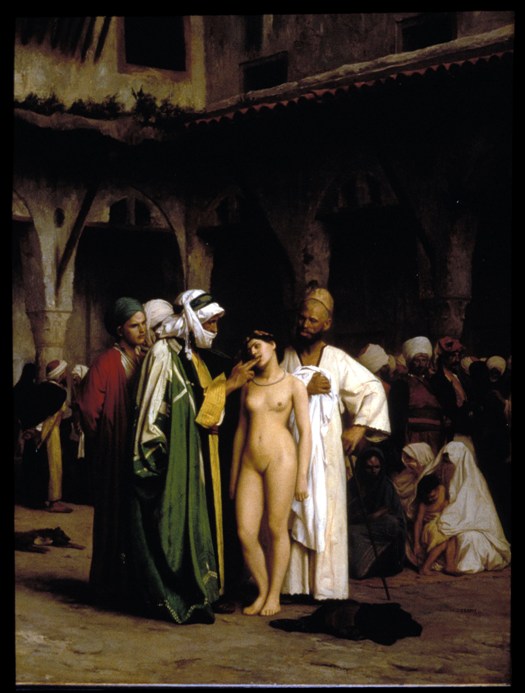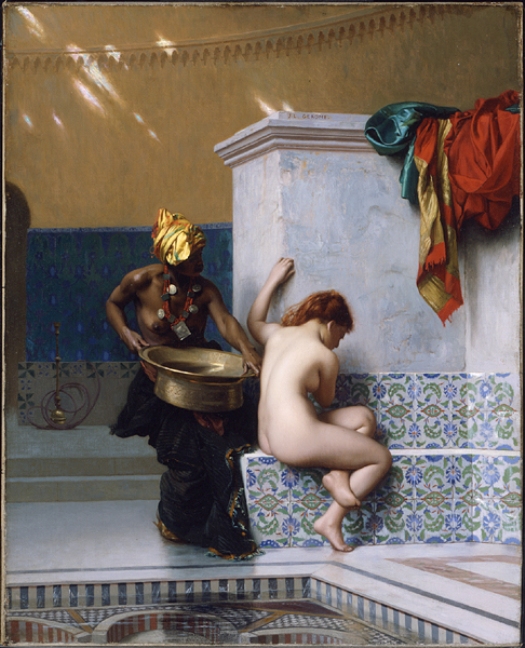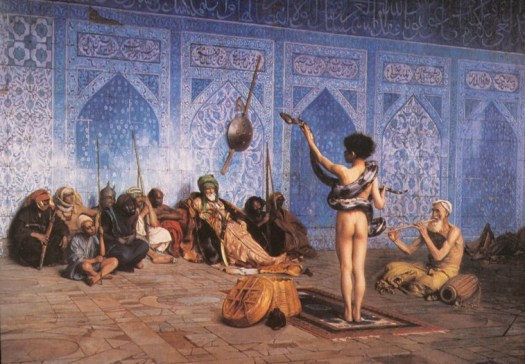Questions, ideas, notes for discussion
- How is the colonial discourse of otherness formed according to Bhabha? (Let's consider concepts like fixity, stereotype, ambivalence, power-knowledge, etc). How can we apply this to the Portuguese colonization of West Africa, and the formation of the concept of fetish?
- Bhabha suggests that the predominant strategic function" of colonial discourse as an apparatus of power is "the creation of a space for a 'subject peoples' through the production of knowledges in terms of which surveillance is exercised and a complex form of pelasure/unpleasure is incited... The objective of colonial discourse is to construe the colonized as a popuilation of degenerate types on the basis of racial origin to justify conquest and to establish systems of administration and instruction." (Bhabha 100) Now take a look at the following orientalist paintings by Jean-Léon Gérôme (1824-1904), and consider Bhabha's statements. Can we consider Orientalist paintings of the 19th century as a politicized means of representation, or production of knowledge? How do the discursive tools of surveillance, pleasure/unpleasure, racism/sexism, degenerateness/corruption, and realism operate in these paintings?
- Fetish is certainly a complex concept that went through substantial transformations of its meaning, its associations, its connotations from 16th-17th century all the way to today, shaped by a variety of disciplinary discourses including antiquarianism, anthropology, art history, psychology, art, economic theory just to mention a few. As a thing and a word, it has a colorful biography. For the same reason it is a bit of a troubled and heavily loaded concept, because of its unescapable associations with colonialism, imperialism, and discourses on primitivism and sexuality. However, Pietz in his project on the fetish, would like us to return to its 16th-17th century context, to the encounter between the West African societies and the Portuguese colonists, and explore the ethnohistory of the concept at the time of its first shaping (as a product of that encounter). In what ways is this genealogical approach helpful in developing a theory of material culture (which is our agenda this semester) and of powerful things, things with agency in the public sphere?.
- Let's unpack Pietz's discussion of the four main characters of the fetish:
- its "irreducable materiality"
- its "power to repeat an original event," ability to recall that event to memory, fetish as a heterogenous composite fabrication.
- its non-universal, socially constructed value
- fetish as "an object established in an intense relation to and power over the desires, actions, health, and self-identity" of embodied individuals.
- This is absolutely delightful:
- "Works of art are true fetishes only of they are material objects at least as intensely personal as the water of tears" (Pietz 1985: 12, quoting Michel Leiris "Albersto Giacometti" Documents 1/4 (1929) 209).

Jean-Léon Gérôme, The Slave Market, 1867. Oil on canvas. Size 33 3/16 x 24 13/16 inches.
 Jean-Léon Gérôme, The Moorish bath, 1870. Oil on canvas.
Jean-Léon Gérôme, The Moorish bath, 1870. Oil on canvas.
 Jean-Léon Gérôme, The snake charmer, 1889. Oil on canvas. 33.07 x 48.03 inches
Jean-Léon Gérôme, The snake charmer, 1889. Oil on canvas. 33.07 x 48.03 inches
